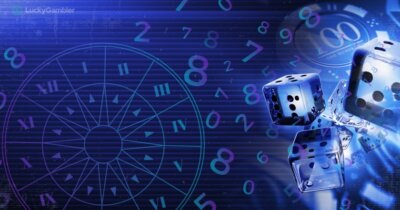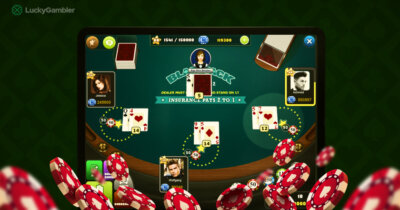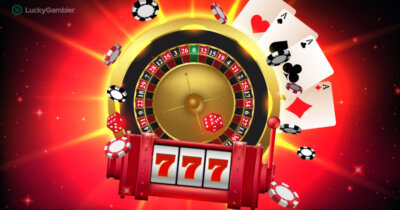In blackjack, hand signals are crucial. For a hit, tap the table. To stand, wave your hand over the cards. Doubling down involves placing extra chips and showing one finger. Splitting a pair requires placing an extra bet beside your original and showing two fingers.
Blackjack Hand Signals
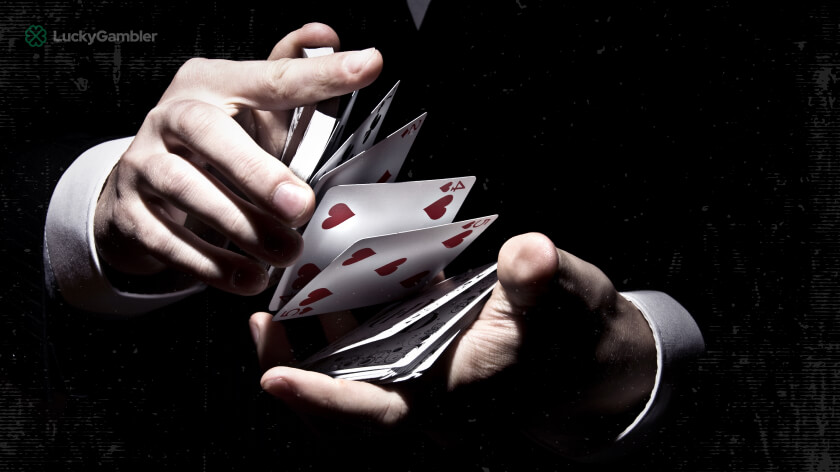
LuckyGambler is a review platform, that provides personalized casino offers through affiliate links, earning a commission at no extra cost to you when depositing. It doesn’t affect how our team rates and ranks the casino brands, we want to ensure that players are matched with the right casino offers.
Blackjack hand signals are an intricate science to master. This card game, renowned for its strategic depth and thrilling gameplay, relies heavily on non-verbal communication through gestures and hand signals.
Blackjack offers players a spectrum of choices during each hand:
- hitting to request another card
- standing to keep the current hand
- doubling down to double the initial bet
- splitting pairs into two separate hands
- or surrendering to forfeit the round.
These actions are pivotal in shaping one’s destiny at the blackjack table. They necessitate a discreet yet efficient means of communication between the player and the dealer.
Each signal carries its own unique significance, allowing players to make their intentions clear without uttering a word. Blackjack hand signals serve as a universal language, ensuring clarity and fairness in the game. Join us as we unravel the secret language of these signals.
Why Use Blackjack Hand Signals?
Land-based casinos with their chatter, sounds of clinking glasses, and occasional celebratory cheers can be chaos. Add the influence of several drinks to the mix, and it becomes increasingly difficult for the dealer to hear what the players are saying during each crucial round of a blackjack game.
That’s why players use universal hand gestures and signals when engaging in this captivating card game. By employing hand signals in Blackjack, players can easily make their intentions clear. These signals not only streamline the gameplay but also play a pivotal role in making the dealer’s job considerably more manageable.
Hand Signals for Blackjack
The language of blackjack hand signals serves as the medium through which players convey their strategic decisions. Each gesture has a distinct meaning, and understanding these signals is essential for a seamless gaming experience.
Let’s explore the four common blackjack hand signals, including the slight distinctions in different blackjack variations:
Blackjack Sign for Hit
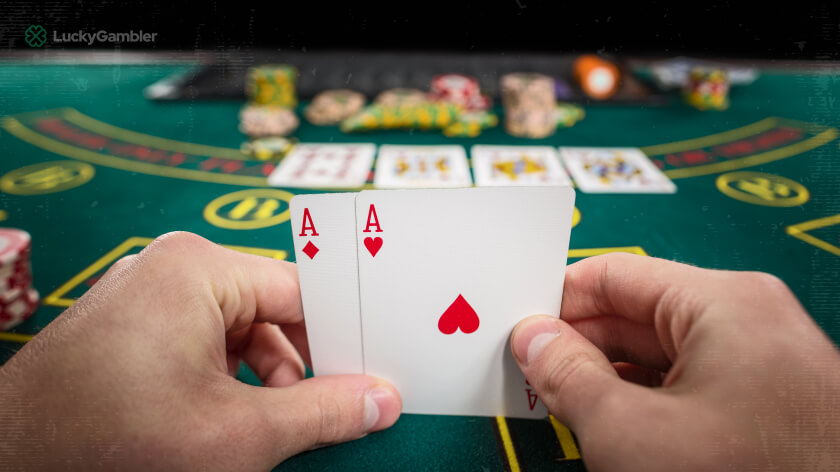
This is an essential blackjack hand signal employed when players believe an extra card can enhance their chances of winning against the dealer. To request another card while you play blackjack, use the “hit” signal. Extend your index finger and gently tap the table, usually behind your cards. After you’ve seen the hand, you may request an additional card from the dealer. To convey this “hit” signal when playing face-down blackjack, take the hand holding your cards and gently scratch them across the table’s surface.
Blackjack Hand Gestures for Stand

To maintain your current hand without receiving additional cards, simply wave your hand, palm-down, horizontally over your cards. The dealer will promptly understand your choice and proceed, either revealing the hole card or moving on to the next player in the sequence. When playing face-down blackjack, gently slide your cards underneath your stack of chips without moving the chips.
Blackjack Signal for Double Down
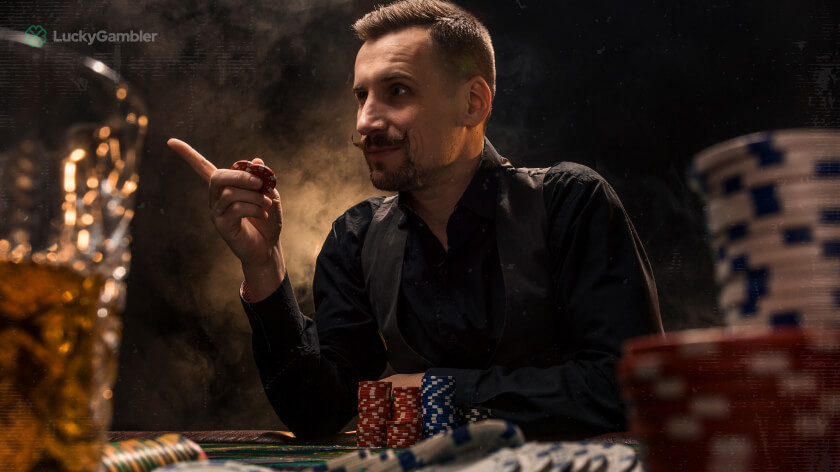
The hand signals have some variations, so let’s begin with face-up blackjack, a.k.a double-exposure blackjack. When you wish to double your original bet and receive one more card, place the same amount of chips next to your initial bet but outside the betting box, and using one finger (usually your index finger) touch the table.
To execute a double-down move in face-down blackjack, place an additional stack of chips next to your initial bet, and show that you want to double down by raising one finger.
Splitting Hand Signal in Blackjack

Should you be dealt a pair of cards with the same value (e.g., two 7s), the option to split them into two separate hands becomes available. To signal your intention to split, place an additional bet equal to your initial one beside your cards, form a “V” shape with your index and middle fingers, and put them on a table. Speaking of face-down variation, all you need to do is place an equal bet next to your chips and hold up two fingers.
In Conclusion
Blackjack hand signals not only add a touch of professionalism to the player’s demeanor but also serve as a fundamental aspect of physical casino etiquette. However, it’s crucial to remember that no one forces you to use these signals while playing blackjack.
Furthermore, when playing blackjack online, you don’t need these hand signals. In the digital arena, where there are no face-to-face interactions, mastering different signals becomes irrelevant. Still, you may see the dealer making hand signals for “open bets” and “close bets.” These actions are largely habitual and serve as an aesthetic move rather than a functional necessity.
FAQ
What are the hand signals for blackjack?
What is the split signal in blackjack?
In blackjack, the signal to split is to place a matching pile of chips next to your original bet and hold up two fingers, indicating a split. This tells the dealer you want to split your pair of cards into two separate hands.
How do you signal double down in blackjack?
To signal a double down in blackjack, push an additional stack of chips, equal to your initial bet, next to your original bet. Do not place the chips on top of the original stack as this can be mistaken for tampering. This indicates to the dealer that you are doubling down.
What is the hand signal for insurance in blackjack?
In blackjack, there is no specific hand signal for purchasing insurance. To buy insurance, you typically verbally inform the dealer. This option is available if the dealer’s up-card is an ace, allowing you to place a side bet to protect against the dealer having a blackjack.



